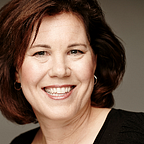What We Can Learn About Intention from David Hockney
On Sunday I went to see the David Hockney exhibit at the LA County Museum of Art. The title of show is 82 Portraits and 1 Still Life, which gives you a good idea of what it is but little idea of what it actually feels like to stand in the gallery.
You could feel the cohesion of the project, the fact that the artist set out to do something very particular. You could feel his intention — it was the buzzing current running through the gallery. It felt like the thing giving the collection life.
The same is true with book projects. Intention matters. You can feel it when a writer has come to the work with purpose and a point. Here are 4 things we can learn from Hockney about intention:
1. Intention is different from the initial spark. It is the process of commitment. David Hockney is an English painter. He has lived and worked in England and in Los Angeles. In 2013, crushed with grief over the death of a very young studio assistant, Hockey moved back to Los Angeles and came across a friend who was also deep in grief — his head buried in his hands — and Hockney recognized in that posture his own sadness. According to the Los Angeles Times, Hockney said, “Stay like that. I’ll paint you.” That was the spark of the idea to paint portraits of some of his closest friends. The commitment to paint a series of similar portraits, and all in the same style, is where his intention came into it.
Intention is the application of structure and commitment to a fleeting idea. It’s why one of the first questions I always ask a writer is why they want to write the thing they are writing. If they can articulate their intention, they can likely commit to it.
2. Intention gives a project form. Hockney painted all the portraits in this series with the same palette. The canvases are all 4 feet by 3 feet. All the people he painted were asked to sit in the same yellow chair against the same blue backdrop, and they were asked to sit for three days so he could make a “20-hour exposure” of them. These intentional decisions turned his paintings from random things he made into a solid whole — a collection with weight and form and purpose. The paintings belong together. They play off each other. The structure of a book gives the same weight and shape to the content; it defines how the reader will encounter the work, and how they will experience it.
3. If you are clear on your intention, the intention will guide you. An artist has to make hundreds of thousands of decisions. How did Hockney decide who to paint, and when to paint them, and what he was after in that painting? Ayn Grinstein, the daughter of some of Hockney’s longtime friends, sat for the artist the day after her father’s funeral, and explained how his intention guided the artist. “He was very interested in getting me there as fast as possible after my father passed away,” Grinstein told the LA Times, “and I knew it was about sadness and mourning. He knew the mood of what he wanted to paint even before I got to his studio.” That intention can guide your work, too — remembering why you are writing this particular book, chapter, or scene and what you intend for it to do.
4. If you are clear on your intention, it will feed you. Hockney painted people from his life — old friends, long-term colleagues, his dentist, a housekeeper, a studio assistant, his siblings. He has been painting people close to him throughout his career, but his intention, now that he is 80 years old, was not to feel isolated and lonely. He asked people to spend three days in the studio with him, and they had lunch and conversation. His intention to paint the friends sustained him. “I quite like visitors because I don’t go out much,” Hockney told the LA Times, “I don’t go to concerts or opera anymore. I can’t hear much. It’s isolating, it is.” He went on to explain that the painting project gave him purpose: “When I’m in the studio, I feel like I’m 30. But when I leave it, I know I’m 80. So, naturally, I stay in here. Wouldn’t you rather be 30?”
People who are drawn to write know that same feeling — the sense that the work feeds you and sustains you. You don’t get that from writing in response to prompts or morning pages. You get it from a work whose intention you have set and committed to.
